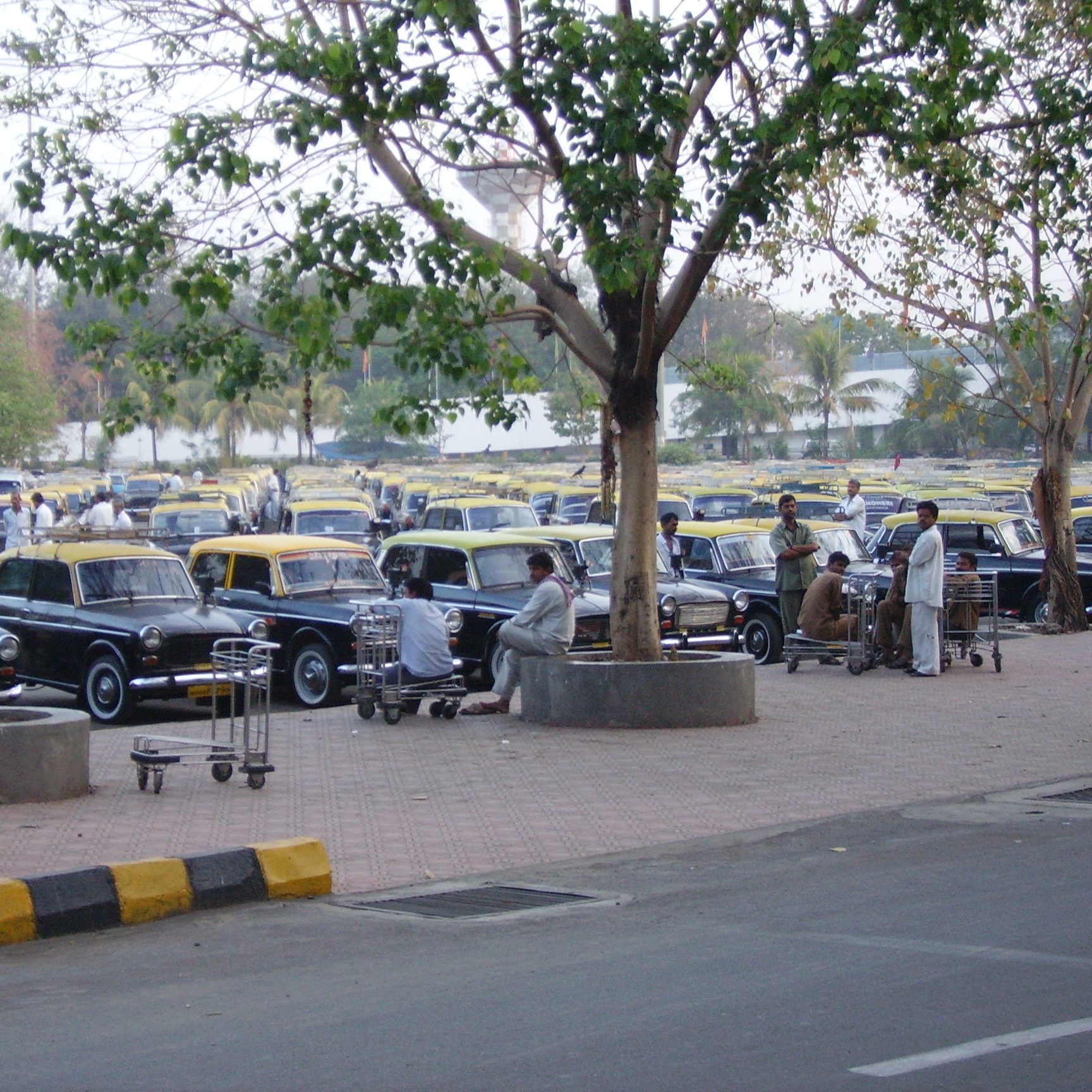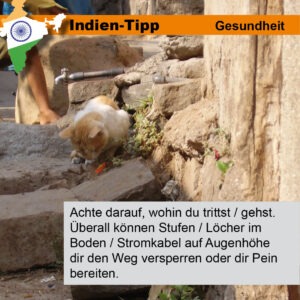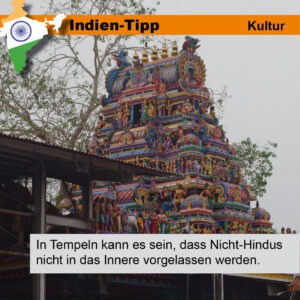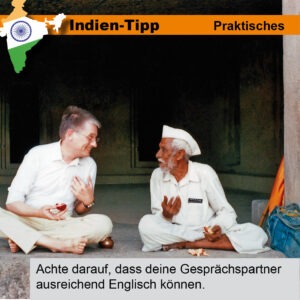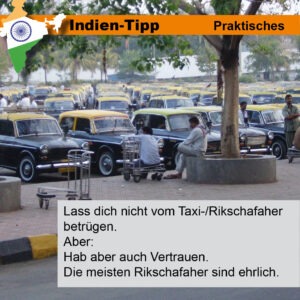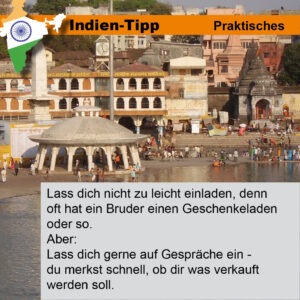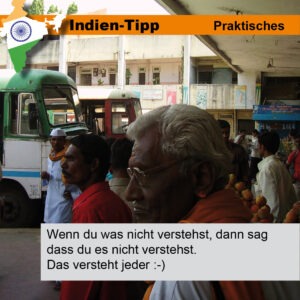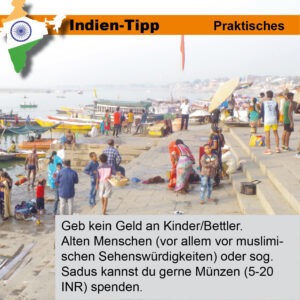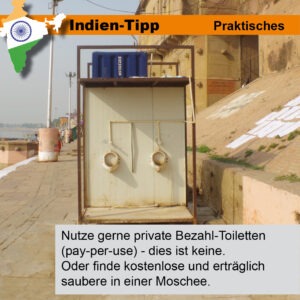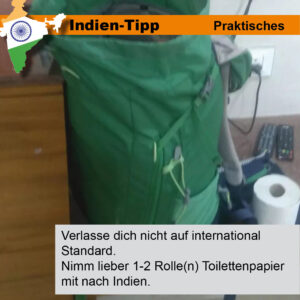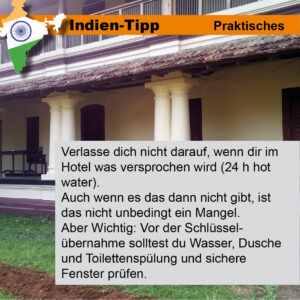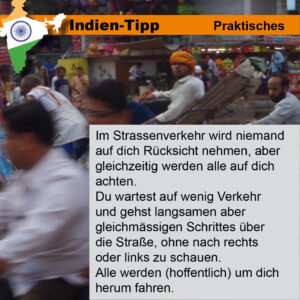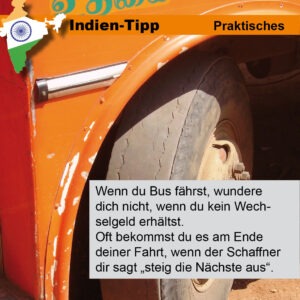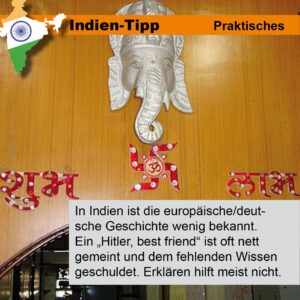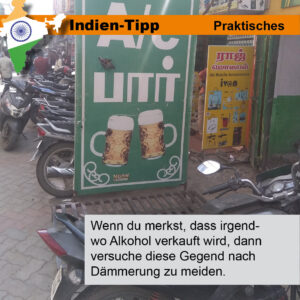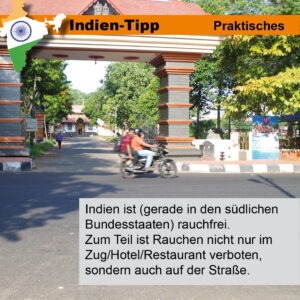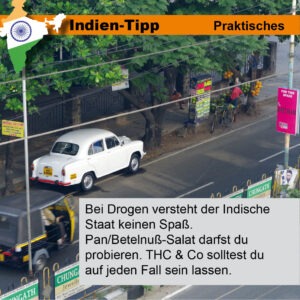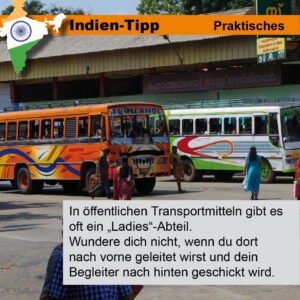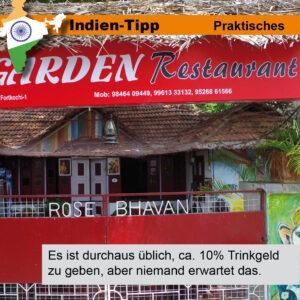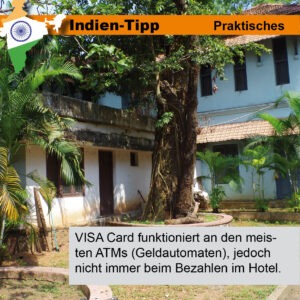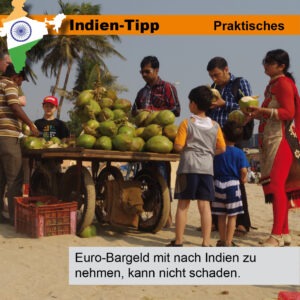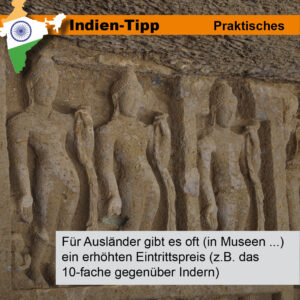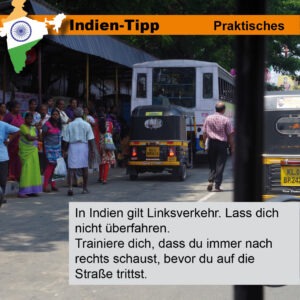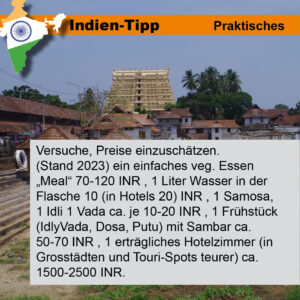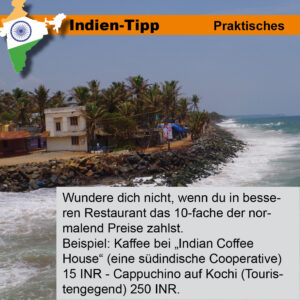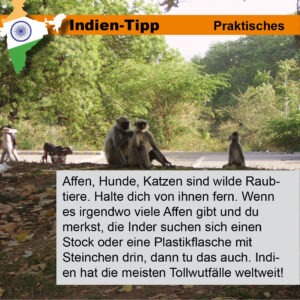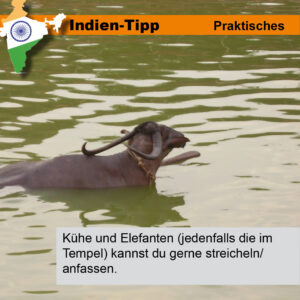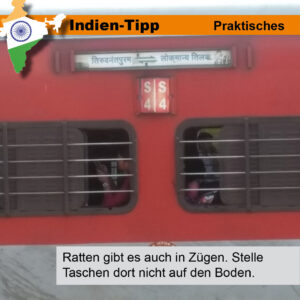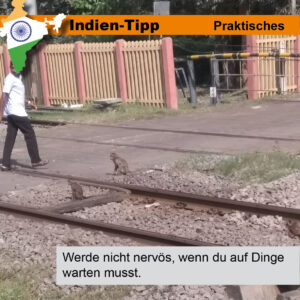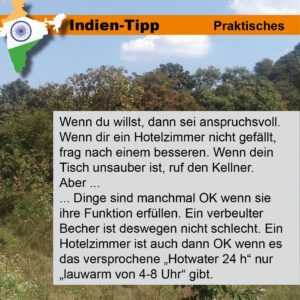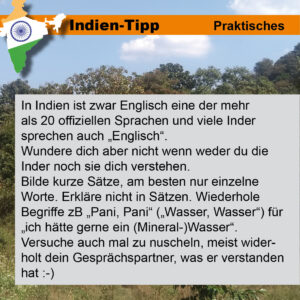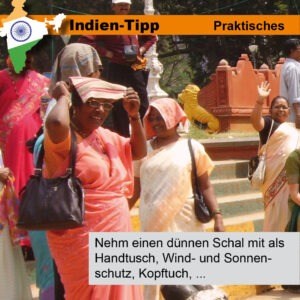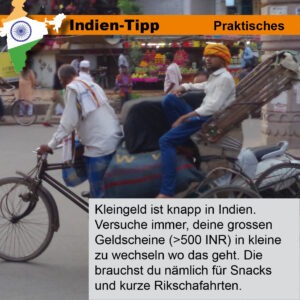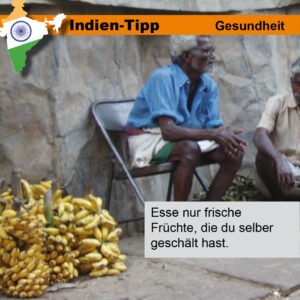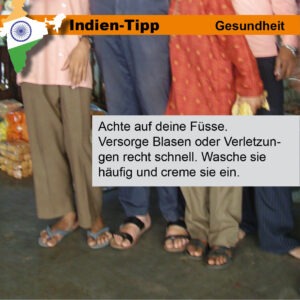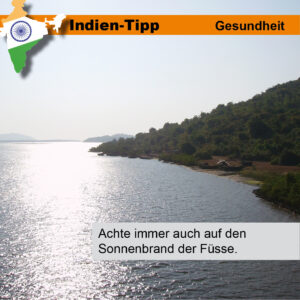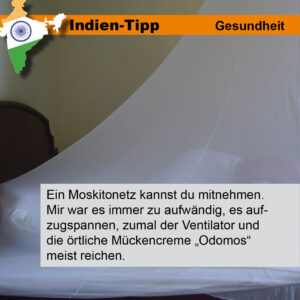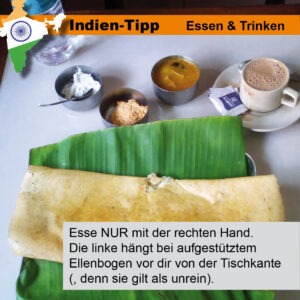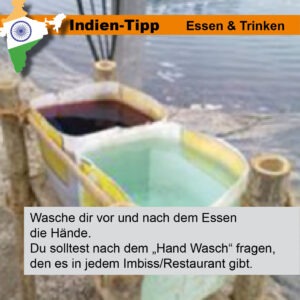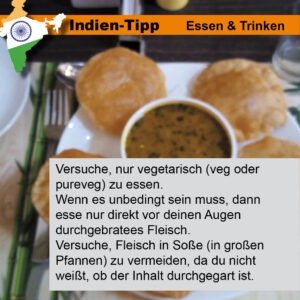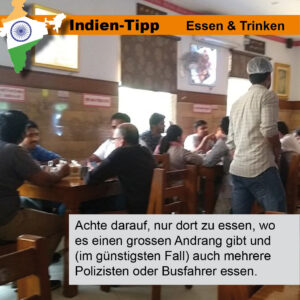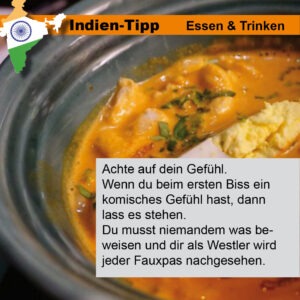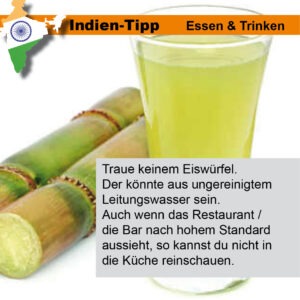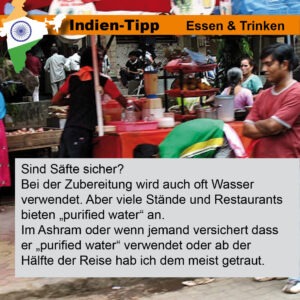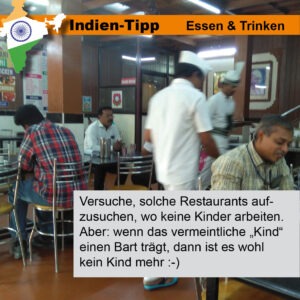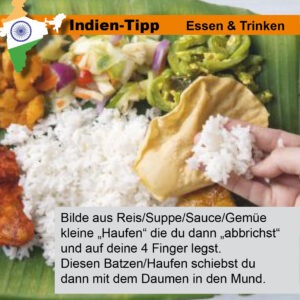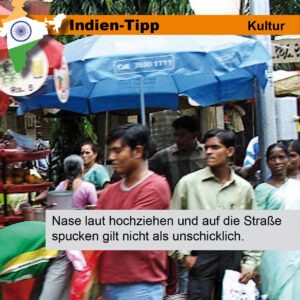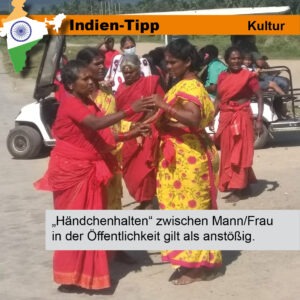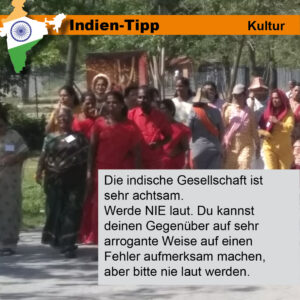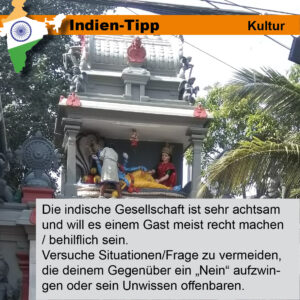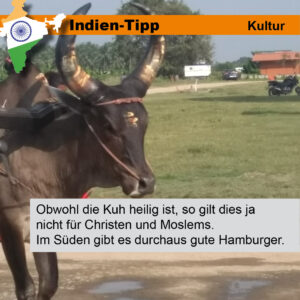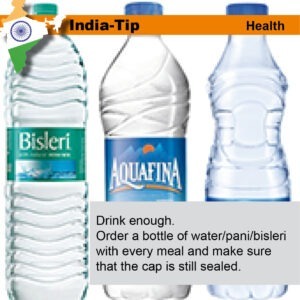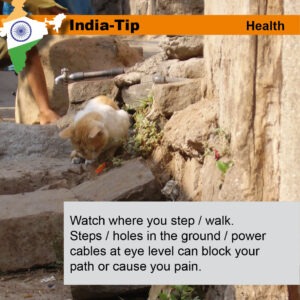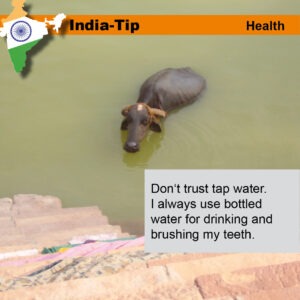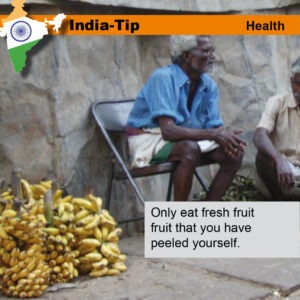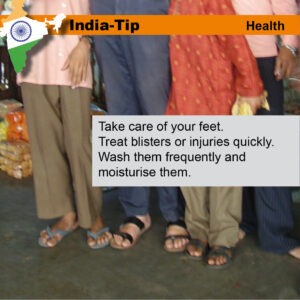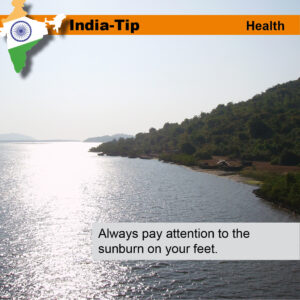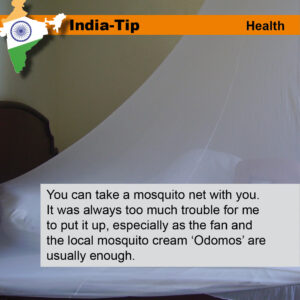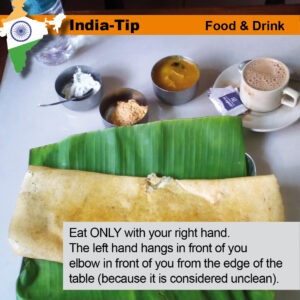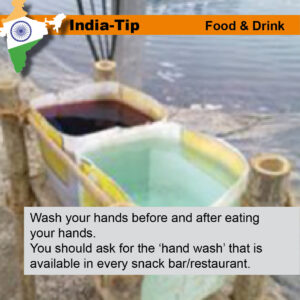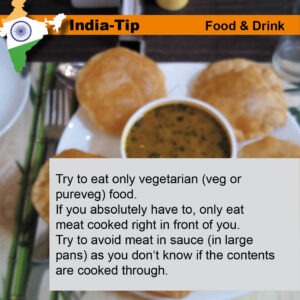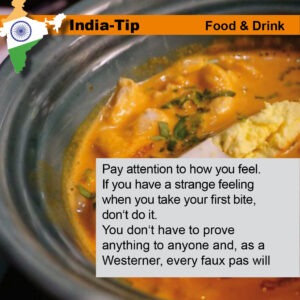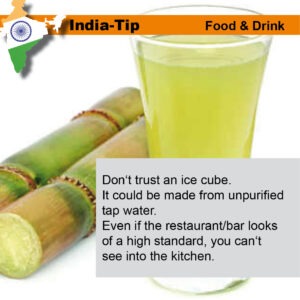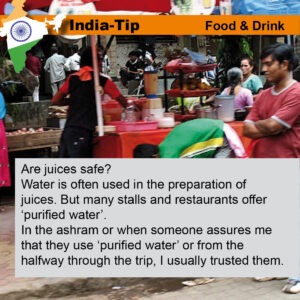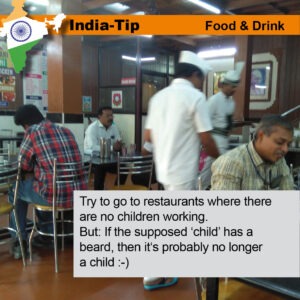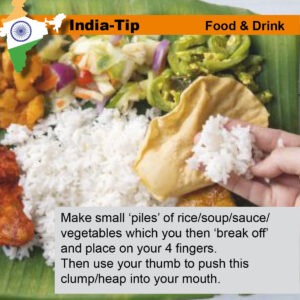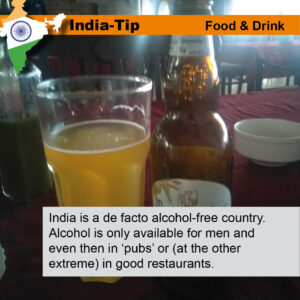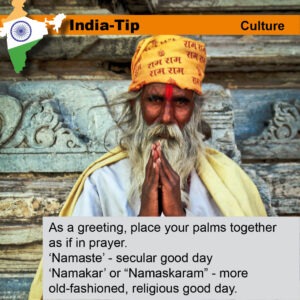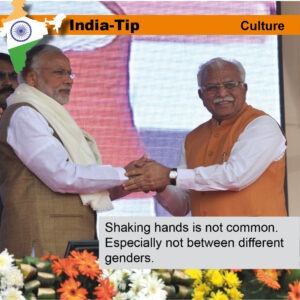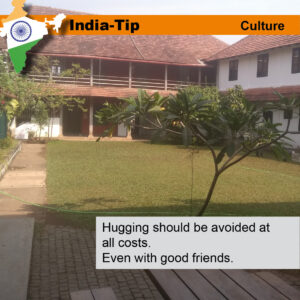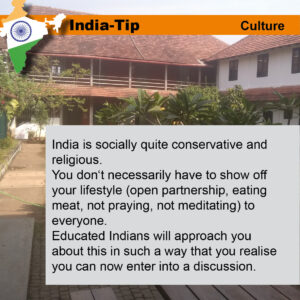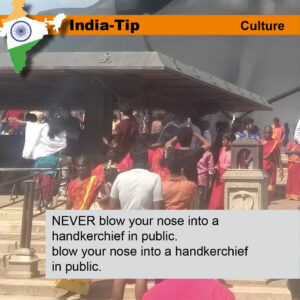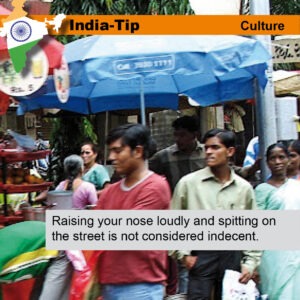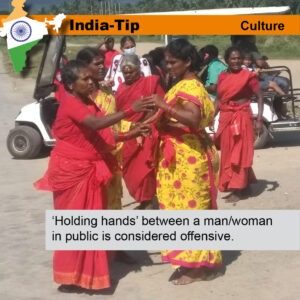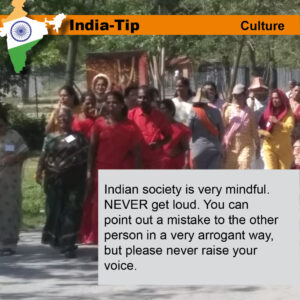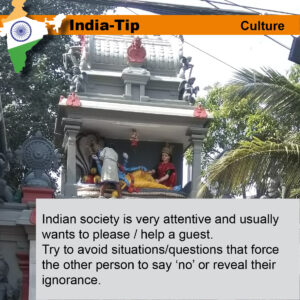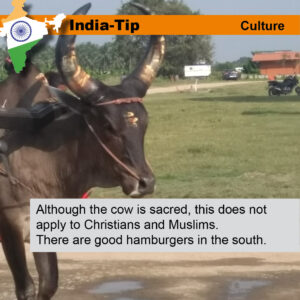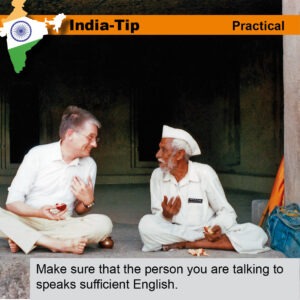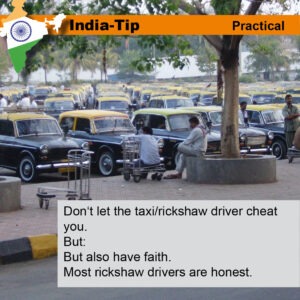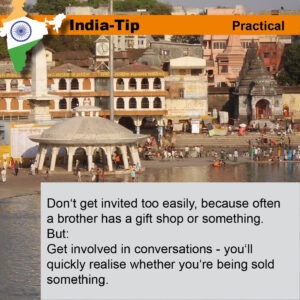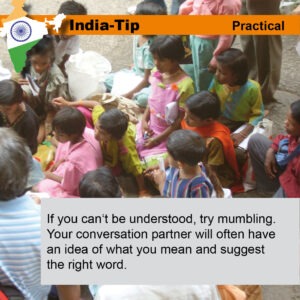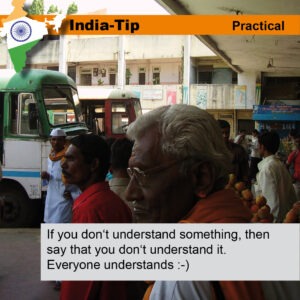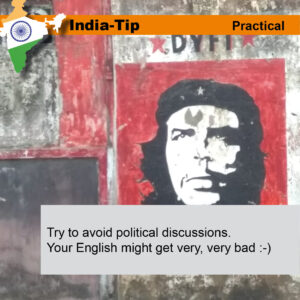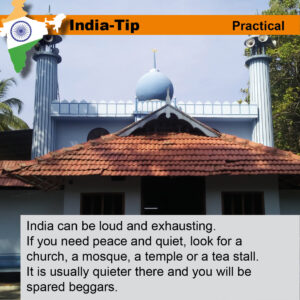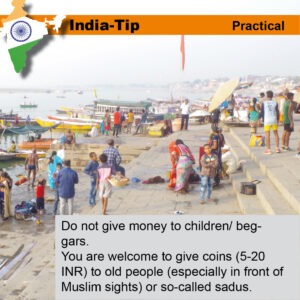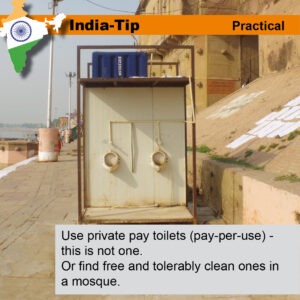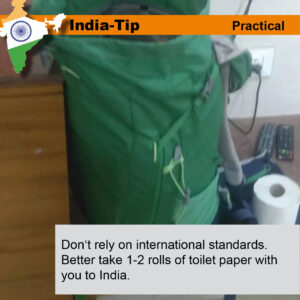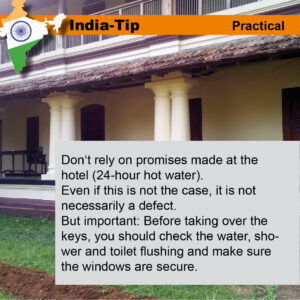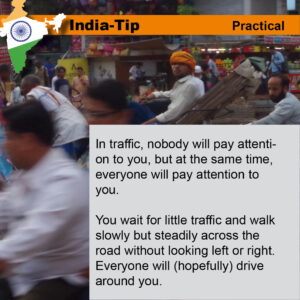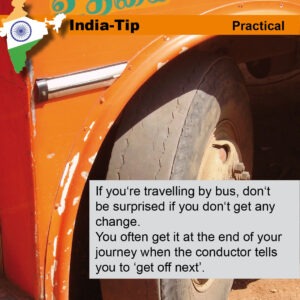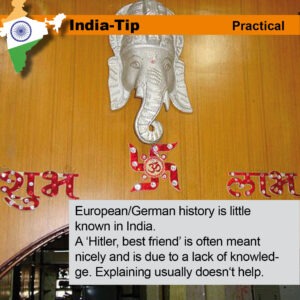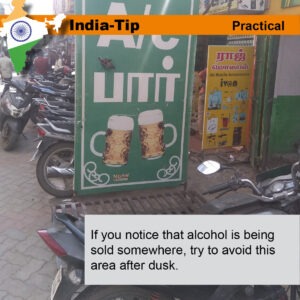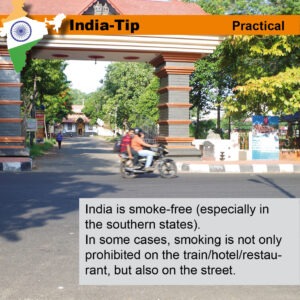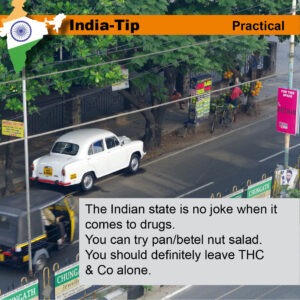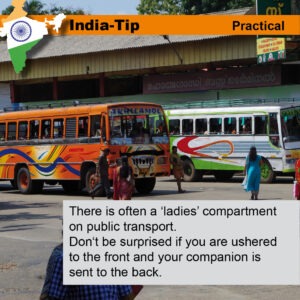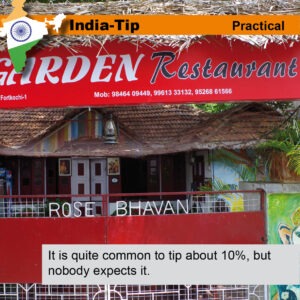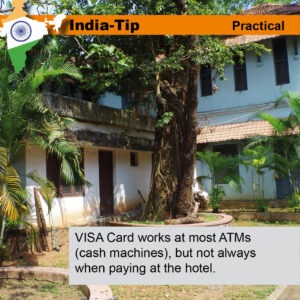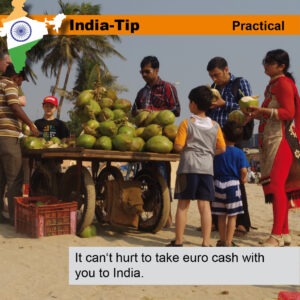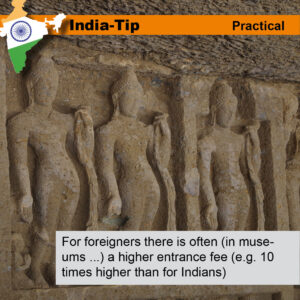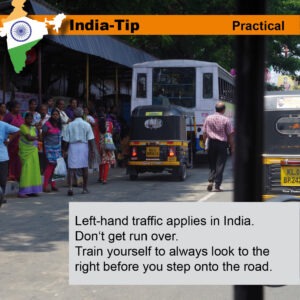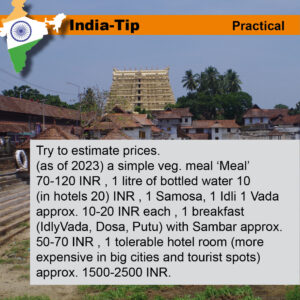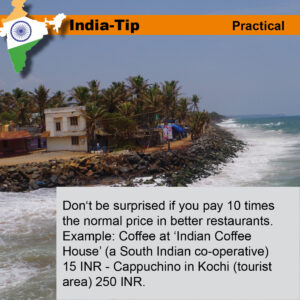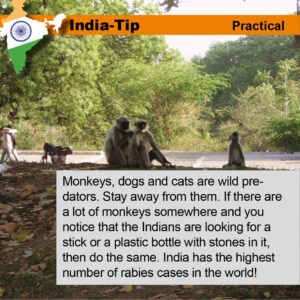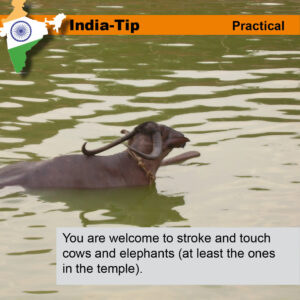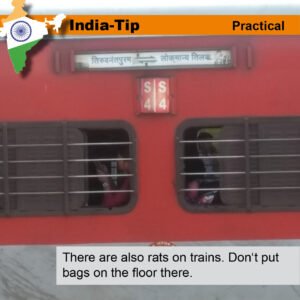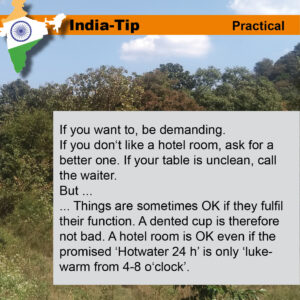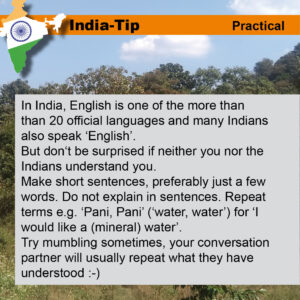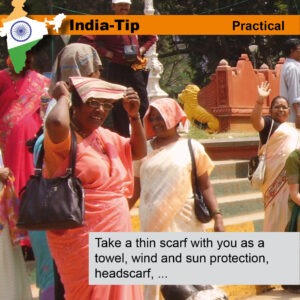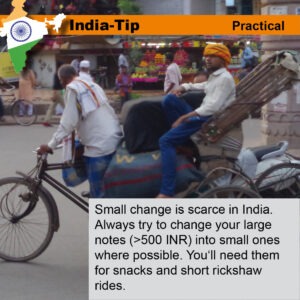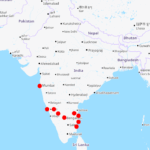
Mumbai – Kawa – Jogfalls – Bellur Hallibed – Bangalore – Tirupatti – Chennai – Mahabalipuram – Pundicherry
Tentative steps. Do I want to take the plunge? I’m travelling with my sweetheart to her beloved India. For me, this is a journey into the unknown at the beginning.
I’m going to be surprised.
Mumbai
My ‘arrival in Bombay’, that’s what Mumbai was still called in my mind back then. My first time in INDIA.
I had heard and thought so much about this huge country, but I couldn’t really imagine where I would fly to.
Relying completely on my sweetheart, I put myself in her hands and trusted that everything would be fine and wonderful.
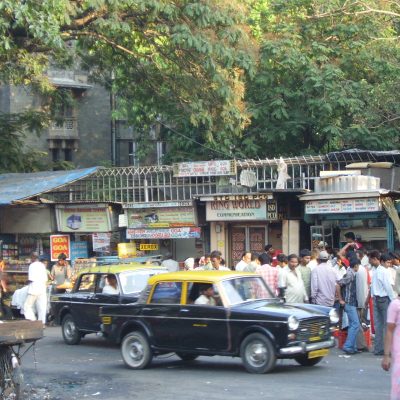
Mumbai (Maharashtra, India), street scene with taxi, 18 March 2006.
So we disembarked in Mumbai into a stuffy, hot something, which is the typical subtropical hot humidity. In any case, we arrived at the ‘old’ Mumbai International Airport. Fortunately, before we could be approached by taxi drivers, we immediately disappeared into a dubious stairwell in search of the airport staff canteen. We found it after a few confusions in the labyrinthine corridors and were able to fortify ourselves with a few idli sambar, some vadai and a lassi right at the start of my India experiment. This was just the right thing: ‘easy going’.
And then off we went straight away in a prepaid taxi towards Colaba in the south of Mumbai. The armada of taxis at Mumbai airport is a visual experience, even though there is now a new international airport in Mumbai. The first taxi ride (the first ever, but also the first after arriving in Mumbai) is always an experience – soaking up the smells – taking in the street scenes – no matter what time of day – great. It takes a long time, maybe 1.5 hours, to drive to the south of Mumbai, to Colaba.
Unbelievable. We had pre-booked the hotel for two nights. The south of Mumbai was just right for my first arrival. Travellers bustle around here, there are cafés, markets and the streets are safe. However, there are also beggars and drug dealers. It’s best not to buy drugs or fake saffron.
A good walk and we can easily reach the Gateway of India, THE monument in Mumbai, right next to the famous Taj Mahal Palace hotel. A chilled out stop to arrive.
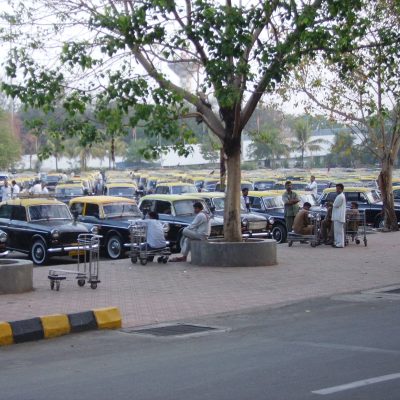
International Airport, taxi stand, Mumbai (Maharestra, India), 2006
If you like, you can also take a day trip from the Gateway of India to Elephanta Island; boats to transport you to the island of the historic caves leave every 30 minutes. It’s definitely worth a short trip. If you do try it, make sure you take food and water with you and beware of the monkeys who like to stibble food bags.
My flash at perhaps the largest railway station in the world – Victoria Terminus. This terminus station with endless tracks and millions of passengers every day is characterised by an unbelievable amount of people. In order to get our tickets to Kawa, we had to queue on the first floor with many other people and wait, wait, wait. Luckily there are 2 foreigner counters where you can buy your tickets. It took us half a day to get the tickets for the next day.
Kawa
Finally on the way to Kawa, where we wanted to continue by bus to the waterfalls, the Jogfalls.
But first my first railway experience in India. We have reserved seats on an overnight train to Goa or Vasco de Gama, as the capital of Goa is called. I’m excited and eventually we find our carriage. Now we can finally set off. But nothing happens – of course we start late. But that doesn’t matter. I can make good use of the time to soak up all the impressions. An unfamiliar smell, which is probably most reminiscent of the former GDR trains, which may be due to the cleaning agents. We have a seat in the sleeper class, the cheapest. But this is where we can best observe our fellow travellers.
We had to change trains at Vasco de Gama – a railway station just outside the city. As India is a huge country with an incredible number of travellers, some train stations (here in the south) are particularly well equipped. This railway station is no exception. There is a very good and clean shower/bathing area for travellers. I make use of it as soon as we arrive in the morning. In the afternoon, we continue on to Kawa. Unfortunately, we don’t have time to visit Goa. Maybe we’ll come back to Goa on one of our next trips.
When we arrived in Kawa, I was a little surprised, if not shocked. My sweetheart quickly found a hostel that was good, cheap, clean and safe. But … what was new and unusual for me was that the doors had thick steel bolts and were locked with padlocks. For me, this was a sign of the ‘bottom end’. Today I know that this is often the case with good pilgrim hostels, as they are very secure.
Jogfalls
Scared on the bus? Yes, yes, you can learn that here on the mountainous roads of the Western Gats. All the bus drivers take the hairpin bends at a murderous pace; oncoming traffic is ignored; every now and then they pray for their colleagues’ children, who are now orphans.
And then – finally the Jogfalls – finally this extremely good hostel run by the KSTDC (Karnataka State Tourism Department), a newly renovated government accommodation centre. Apart from a small kiosk for water, crisps and omelettes, there was nothing else at this place apart from the waterfall.
A short trip through nature and we were down by the water with a heavenly view of the dried-up waterfall. We climbed over granite blocks almost barefoot towards the water. We briefly consider whether we want to go for a swim. Luckily, we spot the funny little animals, the water snakes, almost at the last second. But we also learnt from the locals that when there are snakes in the pool, it’s better to jump into the middle of the water rather than at the edge where the snakes are. Pub, that just went well.
Bellur Hallibed
We then travelled on by bus towards Hassan and Bellur Hallibed, a large collection of very, very beautiful temples. Here, too, there was a pilgrim hostel run by the KSTDC. We had a small bungalow in which we were eaten up by mosquitoes. Nevertheless, this is a beautiful place with a marvellous courtyard. As a European, I thought the world ended here. But I was proved wrong on a later trip, in Gangooli on the edge of the Arabian Sea.
Bangalore
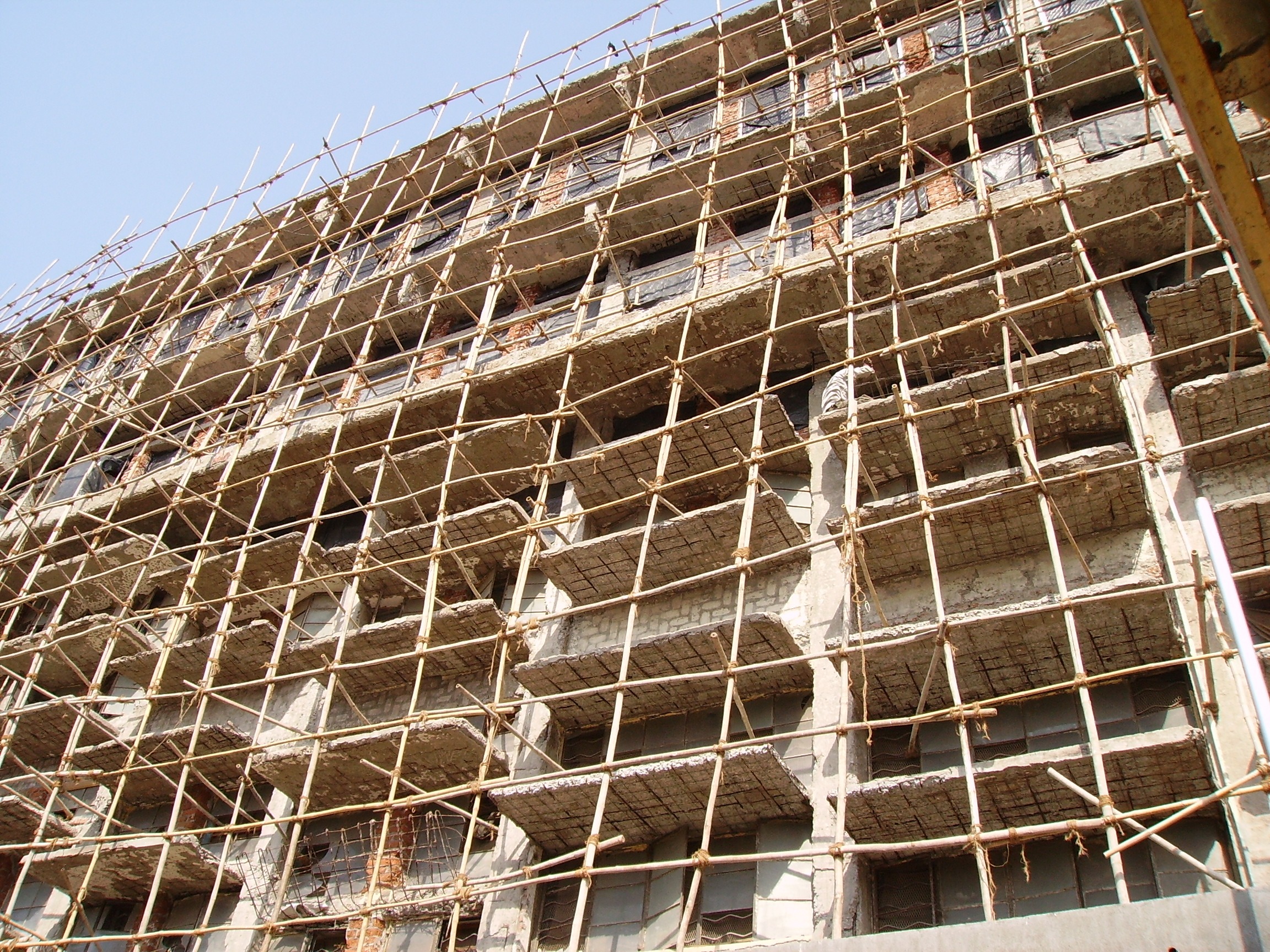
Scaffolding construction in Mumbai (Maharestra, India), 2006
After a week of travelling from Mumbai by train and bus, my future wife and I finally arrive in Bangalore. I have heard so much about this city. My father-in-law’s primary school friends live in Bangalore – we want to visit them.
My first ‘real’ contact with Indians. Phew, luckily I didn’t put my foot in it too much: I didn’t hug any women, I didn’t get drunk, I didn’t force my hand on anyone, I also talked for my wife 🙂 because in India, when travelling in pairs, (M)men are usually addressed first and even if my wife asks someone something, I am addressed as a man when answering.
Our paternal ‘uncle’ Prabhakar and his wife took us to the Nandi Hills, a summer residence of former Mughals. We strolled through the markets of Maleshwaram, which was quite an experience. And we even found a snooker/billiards club at Maleshwaram railway station.
Tirupatti
‘Uncle’ Prabhakar organised a trip to the Tirupatti monastery/temple for us – there are now three of us – together with many other pilgrims on the bus. Tirupatti is in the south of Andra Pradesh and the pilgrimage business seems to run 24 hours a day. The buses run day and night, the hotels are open and you can take a room for just half a day.
After a short overnight stay, we head to the temple, a huge complex on a hill. Tirupatti is said to be one of the richest temples in the world. Among other things, Indian women’s hair is donated at Tirupatti. If someone turns up bald, everyone knows ‘ah, you’ve been to Tirupatti’. For me, Tirupatti means ‘queuing’ long lines of pilgrims, queuing again and again. You can buy so-called ladu. This looks like a tit dumpling to Germans, but it is slightly sweet and tastes of sugar/cashew/milk and all three of us didn’t really dare to eat it because of possible stomach upsets – despite being assured that nothing could happen because the ladu is sacred.
At the end of this trip, our friend Prabharkar said goodbye and we travelled on to Chennai on our own.
Chennai
Unfortunately, we only spent one night in Chennai and used the day to visit the beach (Bay of Bengal). For me it was an experience, it wasn’t a beach for swimming, but rather a beach for strolling with food stalls, games stalls; there were even horses for hire. Wow.
Mahabalipuram (மகாபலிபுரம்)
UAnd then it was on to Mahabalipuram, the small ‘elephant’ town. In Mahabalipuram there are elephants carved out of stone in an adventurous size. And there is also a very beautiful temple right on the beach. This temple, which is located directly on the sea/beach, is said to have survived the tsunami of 26 December 2004 intact. Mahabalipuram is definitely worth a detour on the Chennai – Pundicherry route
Pundicherry (பாண்டிச்சேரி)
Pundicherry, located in the east of South India, was a French colony for a long time. And this can still be recognised everywhere, in the city but also in Auroville, the Sri Aurobindo Ashram.
Pundicherry is a good place to live, there is a very nice centre with great restaurants and a ‘French’ flair.
You should definitely take a trip to Auroville from Pundicherry, even though we were not allowed to enter the spherical meditation centre, which was still under construction at the time.
Nasik
On our return journey, which was to take us via Mumbai, we made a short detour towards Nasik, the city of the Kumb Mela. Shri Raghavendr Swamiji resided nearby and my father-in-law really wanted to visit this place. So he travelled to the guru and my sweetheart and I drove briefly to the town of Nasik.

